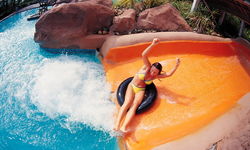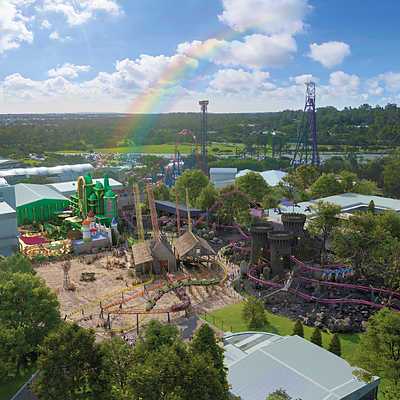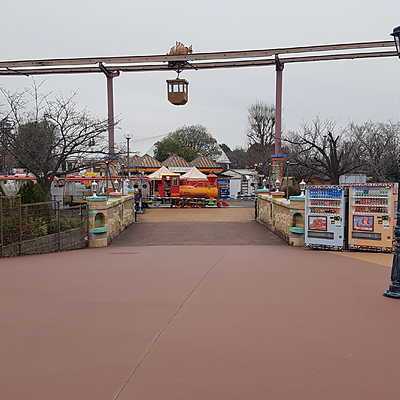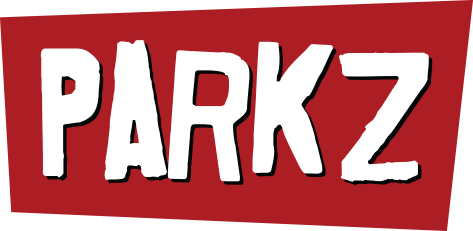Dreamworld, the inefficient park?
Dreamworld, often considered Australia's best theme park for thrill rides, is also often considered Australia's worst park for capacity and efficiency. Roller-Coaster.com.au shows you how it really compares.
Cedar Point in Sandusky Ohio, USA is a park considered by most to be the world’s best capacity park. Because of its standing, it will be used as the benchmark for this comparison.The park gets roughly 3.2 (Source: Cedar Fair) million guests per year. That's seasonal (May – October; 6 months), so we'll take it as a monthly average - 530,000 guests per month. In comparison, Dreamworld gets roughly 92,000 per month, based on 1,100,000 guests per year (Source: Macquarie Leisure Trust Group).
| ||||||||||||||||||||||||||||||||||||||||||||||||||||||||||||||||||||||||||||||
The graph above contains only roller coasters, for which they have a combined capacity of 24,900 pph. Figures for non-coaster attractions are harder to come by. I think it's a very safe assumption that they get no less than twice this for combined ride capacity including the non-coaster rides, as they outnumber coasters about three to one. Consequently, We'll take 60,000 as a fair and reasonable estimate.
Dreamworld’s not the greatest park for capacity. In all my experience, visiting the park for well over a decade, I have never experienced the park as a whole operating anywhere near the efficiency listed in the official capacity section. Beside the official figures are “actual” figures, based on my own calculations. They’re not official, but they’re far more true capacities based on timing average dispatch times.
Many of these official capacities are impossible to achieve simply because of the number of vehicles that they've got available to use. Even with peak staffing and a good crew, it's impossible to achieve more than about half the official value for most, if not all the rides above. We'll say this represents about 2/3 the park's collection of rides, which it more or less does (remember that many rides alternate operation). Consequently, Dreamworld's official capacity is around 7665 pph, or realistically, 2550 pph.
Anyone who's been to Dreamworld knows it's not accurate to take the official value, and that my "actual" capacity is far more realistic. I'll use the official values later, just to show that the phenomenal difference between the official and “actual” isn't that much in the scheme of things.
It can be further deduced from the statistics above that Cedar Point has a ratio of hourly capacity to monthly attendance ratio of 0.11 (that is, 0.11 people per hour per people per month, effectively a dimensionless unit). Dreamworld's similar figure shows an equivalent ratio of 0.02. Consequently, Dreamworld's capacity to attendance ratio is a mere 17% of Cedar Point's. Taking the official capacity figures, Dreamworld then still only has a ratio of 0.08, 70% of Cedar Point's.
Dreamworld has 17% of the capacity to attendance ratio of Cedar Point. This means that Dreamworld is effectively 4.3 times less efficient than Cedar Point, the park used as the benchmark in this comparison, because of its reputation as the best capacity park in the world.
The results are much the same even when compared with the Gold Coast's other theme parks, so it's not just on a world scale, but also relative to Australian parks. For instance, using the same method, Warner Bros. Movie World achieved roughly 0.06 - twice that of Dreamworld.
These figure are the core to this comparison. It is a scientific result which takes into account both required factors: average monthly attendance for the duration of the season, and hourly capacity on the rides. Remember that it is relative, such that a park with half the monthly attendance of Cedar Point and half the capacity will have the same ratio. Simply put, because it takes into account specific park attendance, these figures are relative, and can consequently be compared between parks.
People often say that a park like Dreamworld couldn't get a high capacity ride such as a B&M roller coaster because they don't have the attendance to justify it. A mid-sized B&M with a capacity of 1,200 pph, resulting in a 8% boost in attendance in its first year will increase the park's capacity to attendance ratio by 37% in that first year - still well under what might be seen as a desirable ratio. And that is of course assuming it actually operates at the 1,200 pph specified.
Discuss this article in this thread.
Featured in this article
Recent articles

















